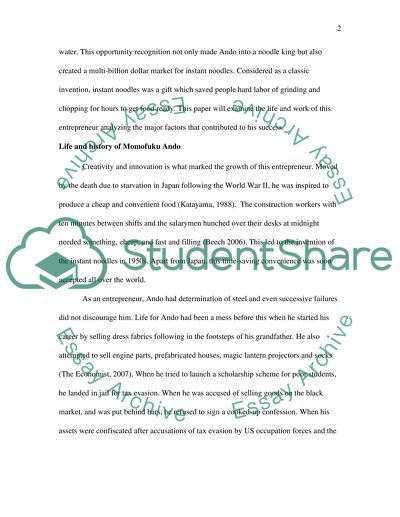Cite this document
(Momofuku Ando's Credo on the Opportunity That Paves the Way for Furthe Essay, n.d.)
Momofuku Ando's Credo on the Opportunity That Paves the Way for Furthe Essay. Retrieved from https://studentshare.org/biographies/1540091-briefly-examine-the-life-and-work-of-an-entrepreneur-momofuku-ando-analysing-the-major-factors-contributing-to-their-success-as-an-entrepreneur-what-element
Momofuku Ando's Credo on the Opportunity That Paves the Way for Furthe Essay. Retrieved from https://studentshare.org/biographies/1540091-briefly-examine-the-life-and-work-of-an-entrepreneur-momofuku-ando-analysing-the-major-factors-contributing-to-their-success-as-an-entrepreneur-what-element
(Momofuku Ando'S Credo on the Opportunity That Paves the Way for Furthe Essay)
Momofuku Ando'S Credo on the Opportunity That Paves the Way for Furthe Essay. https://studentshare.org/biographies/1540091-briefly-examine-the-life-and-work-of-an-entrepreneur-momofuku-ando-analysing-the-major-factors-contributing-to-their-success-as-an-entrepreneur-what-element.
Momofuku Ando'S Credo on the Opportunity That Paves the Way for Furthe Essay. https://studentshare.org/biographies/1540091-briefly-examine-the-life-and-work-of-an-entrepreneur-momofuku-ando-analysing-the-major-factors-contributing-to-their-success-as-an-entrepreneur-what-element.
“Momofuku Ando'S Credo on the Opportunity That Paves the Way for Furthe Essay”. https://studentshare.org/biographies/1540091-briefly-examine-the-life-and-work-of-an-entrepreneur-momofuku-ando-analysing-the-major-factors-contributing-to-their-success-as-an-entrepreneur-what-element.


